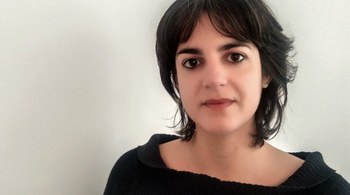Lecture by Sonsoles Hernández Barbosa (Universitat de les Illes Balears)
Data: 07 MAGGIO 2025 dalle 11:00 alle 15:00
Luogo: Aula Magna di S. Cristina (Piazzetta G. Morandi 2 - Bologna) - Evento in presenza e online

The course "New Perspectives for the Study of the Visual Culture of Modernity" (I and II) explores new methodological approaches to understanding modernity through the lens of visual studies. Drawing on visual studies, sensory history, and sound studies, it examines how sensory experiences shape cultural practices. The course is divided into two sessions: one focused on the public sphere and the other on the private sphere. In each of them, different objects of the culture of modernity will be dealt with to explain the new changes associated with its use.
The first session will be focused on the mobilisation of the senses in the modern city particularly in department stores and immersive multisensory attractions such as panoramas. Regarding the first topic, I identify practices that, in the context of the 19th century Parisian department stores, engaged the senses to enhance sales. As for immersive attractions, based on the Mareorama presented at the 1900 Universal Exhibition, I argue that the multisensory panorama represents a crucial step in the construction of simulated experiences: it is the moment when the spectator of the expanded picture, represented by the roundabout format, is endowed with corporeality. At this point, their presence begins to be conceived not merely as an abstract gaze, but as a being with a body and sensibility—both of which are essential to the genesis of simulation. Moreover, we will see how these objects fit into the dynamics of obsolescence of capitalism, while simultaneously considering them as precursors to virtual reality.
The second session shifts focus to artefacts aimed at the senses that were popularised as part of an incipient mass culture to be consumed in the everyday intimacy of the domestic space. It examines optical devices (thaumatrope, kaleidoscope, chromatrope, panoptic polyorama) and sound objects (pianola, gramophone). The aim is to contribute to de-assigning them to a single sensory domain, from which they have commonly been studied, whether it is sight or hearing. I will also argue that these devices contributed to the training of the senses in their everyday use, not only sight and hearing, but also touch, and their relationship with each other.
Beyond introducing students to these visual artifacts, the course encourages them to engage with new objects of study and familiarize themselves with visual studies as a field. Ultimately, it aims to expand their understanding of how visual culture can be used to analyse both past and present.